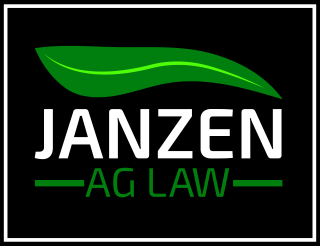Carbon Credits for Cows
/Livestock farmers are famous for their efficiency — livestock farms grow crops which they feed to their animals and then use the manure from the animals to fertilize their crops. This mindset makes farmers perfectly situated to participate in the carbon credit marketplace.
During a recent conversation, a colleague and I discussed the pros and cons of farmers selling carbon credits for building digesters or undertaking regenerative agriculture practices. I’ve written on regenerative agriculture before, but this post takes a closer look at how livestock farmers can benefit from carbon credits.
The idea behind carbon credits is that companies may choose to financially compensate other businesses for reducing greenhouse gas emissions (GHG) rather than make the changes necessary to reduce their own emissions. A buyer can purchase carbon credits from a seller that has reduced its emissions to offset the GHG released by the buyer’s operation. For example, a power plant could reduce its GHG emissions by relying on wind turbines, or it could offset some of its GHG emissions by purchasing carbon credits.
Carbon credits must come from real, quantifiable, verified, certified emissions reductions. This means it requires more than a person simply claiming to have reduced emissions. It must be measured and verified. Livestock producers could create credits to sell by constructing a anaerobic digester, using rotational grazing, sequestering carbon in the soil, installing lagoon covers, or by utilizing other manure management methods to reduce GHG emissions.
What can farmers do with these credits? Numerous states have created healthy soils programs which rewards farmers for enacting regenerative practices. These are generally focused on crop and grazing land (rotational grazing, no-till, and other carbon sequestration practices). Other opportunities exist for livestock producers with methane digesters: utility-based incentive programs supported by state governments, voluntary carbon offsets, and compliance cap and trade opportunities through formal regulatory systems established by state governments. Public-private partnerships may present opportunities in the future for livestock farmers. Recently, Corteva announced that it will contribute $500,000 toward the Corteva Agriscience Climate Positive Challenge. Grant funds from the challenge will reward farmers who use climate-positive practices.
As humans continue to look for ways to reduce our GHG emissions, livestock farmers can play a role by reducing their own footprint and by selling carbon credits to other businesses. State governments, utility companies, and other private-public partnerships will present markets for these credits. The big question for many farmers will be whether it is worth the investment to undertake these climate positive practices. As more carbon credit markets open and more incentive payments materialize, I think it will be. This is especially true if a supplier contract requires a producer to adopt green technology. I’m sure the technology on farms in 10 years will include things we haven’t even thought of today, and I can’t wait to see what our farmers can do!





